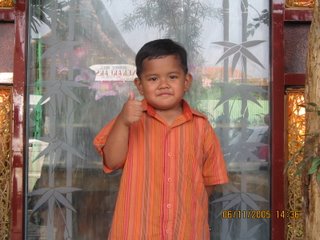
Indonesia, which is the largest archipelago in the world, is an example of a nation with “unity in diversity”. It consists of five major islands and about 30 smaller groups. The figure for the total number of islands is 17,508 according to the Indonesian Naval Hydro-Oceanographic office. The archipelago is on a crossroad between two oceans, the Pacific and the Indian, and bridges two continents, Asia and Australia.
This strategic position has always influenced the cultural, social, political, and economic life of the country. The territory of the Republic of Indonesia stretches from 6.08’ north latitude to 11.15’ south latitude. The Indonesian sea area is four times greater than its land area, which is about 1.9 million sq km (including an exclusive economic zone) and constitutes about 81 percent of the total area of the country.
The five main islands are: Sumatra, which is about 473,606 sq km in size; the most fertile and densely populated islands, Java/Madura, 132,107 sq km; Kalimantan, which comprises two-thirds of the island of Borneo and measures 539,460 sq km; Sulawesi, 189,216 sq km; and Irian Jaya, 421,981 sq km, which is part of the world’s second largest island, New Guinea. Indonesia’s other islands are smaller in size.
The archipelago is divided into three groups. The islands of Java, Sumatra, and Kalimantan, and the small islands in-between, lie on the Sunda Shelf which begin on the coasts of Malaysia and Indo China, where the sea depth does not exceed 700 feet. Irian Jaya which is part of the island of New Guinea, and the Aru Islands lie on the Sahul Shelf, which stretches northward from the Australia coast. Here the sea depth is similar to that of the Sunda Shelf.
Located between these two shelves is the island group of Nusa Tenggara, Maluku and Sulawesi, where the sea depth reaches 15.000 feet. Coastal plains have been developed around the islands of Sumatra, Java, Kalimantan and Irian Jaya.
The land area is generally covered by thick tropical rain forests, where fertile soils are continuously replenished by volcanic eruptions like those on the island of Java. The country is predominantly mountainous with some 400 volcanoes of which 100 are active. Mountains higher than 9,000 feet are found on the islands of Sumatra (Mt. Leuser and Mt. Kerinci); Java (Mt. Gede; Mt. Tangkubanperahu, Mt. Ciremai, Mt. Kawi, Mt. Kelud, Mt. Semeru and Mt. Raung), Sulawesi (Mt. Lompobatang and Mt. Rantekombala), Bali (Mt. Batur and Mt. Agung), Lombok (Mt. Rinjani) and Sumbawa (Mt. Tambora).
The highest mountain is the perpetually snow-capped Mandala Top (15,300 feet) in the Jaya Wijaya mountain range of Irian Jaya. Many rivers flow throughout the country. They serve as useful transportation routes on certain islands, for example, the Musi, Batanghari, Indragiri and Kampar rivers in Sumatra; the Kapuas, Barito, Mahakam and Rejang rivers in Kalimantan; and the Memberamo and Digul rivers in Irian Jaya. In Java rivers are important for irrigation purposes, i.e., the Bengawan Solo, Citarum and Brantas rivers.
A number of islands are dotted with scenic lakes, like the Toba, Maninjau and Singkarak lakes on Sumatra; the Tempe, Towuti, Sidenreng, Poso, Limboto, Tondano, and Matana lakes on Sulawesi; and the Paniai and Sentani lakes on Irian Jaya.
Races and Ethnic Groups:
The Indonesian people consist of hundreds of ethnic groups, with each group having distinct language, art, tradition and custom. Those ethnic groups politically and geographically unite into a nation, the Indonesian nation, under the Unitary State of the Republic of Indonesia, with Pancasila as its state philosophy. It was during the second Indonesian Youth Congress on Oct. 28, 1928, that the Bahasa Indonesia, the Indonesian Language, was for the first time declared as lingua franca for ethic groups residing in the territory now called Indonesia. The event called as the “Youth Pledge” was the starting point of the all ethnic groups to work together to build one nation and one motherland, Indonesia.
The island of Sumatra is home to the ethnic groups of Acehnese, the Gayo, the Batak, Malays, Minangkabauan, Jambi, Palembang etc. The island of Java is home to the ethnic groups of Betawi, Javanese, Sundanese. The island of Bali is home to the Balinese, while the ethnic groups of Lombok, Sasak, Flores and Timorese live in East and West Nusa Tenggara.
In Kalimantan live in the Dayak, Banjar and Malays; in Sulawesi the Minahasans, Torajans, Bugisnese, Makassar, Mandar etc. The Asmat, Marind-anim, Dani, Yali, Korowai, Biak, Serui, Artak are ethnic groups that live in Papua.
Each of these ethnic groups has its own distinct dances popularly known among the public, such as Saman dance of Aceh, Tortor dance of the Batak, Piring dance of Minangkabau (West Sumatra), Ondel-ondel dance of Betawi, Lenso dance of Ambon (Maluku), etc.
Each ethnic group adopts a different kinship system as well. The Bataks, for instance, adopt a patriarchal system, and bear clan names after their own surnames. The Bataks are known for their talented singers. The Minangkabauans, known as domestic tough migrants, stick to a matriarchal system.
Sundanese and Javanese are known for their industrious and tenacious workers, and their arts batik textiles are popular at home and even abroad. So are the Balinese with their particular dancing and carvings. The Bugisnese-Makassars have been known for their seafaring people with their wooden “phinisi” ships sailing high seas since hundreds years ago. Meanwhile, the people of Maluku have been known for their skillful singers and traditional music instruments, and Papuans are the country’s promising athletes for the future.
Remark of the picture : Brilian Putra in action " Indonesia Great...." he said.
No comments:
Post a Comment